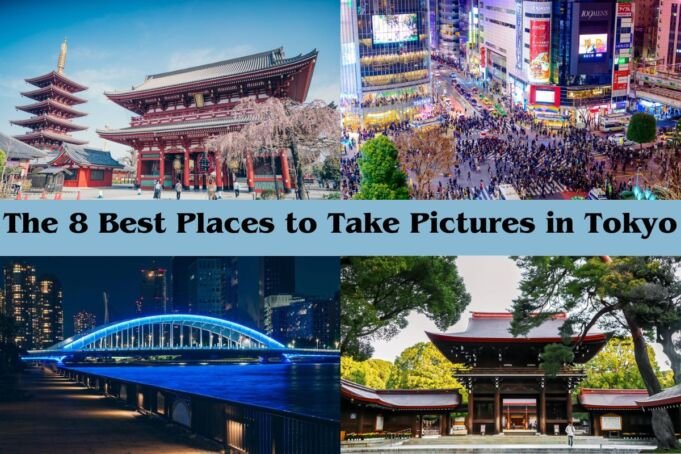Do you want to know about The 8 Best Places to Take Pictures in Tokyo? You are in the right place. Organizing a family vacation can be quite challenging. Tokyo, with its vibrant colors and lively crowds, offers fantastic photo opportunities. There’s an array of stunning sights and landscapes to explore. No matter what kind of photography you’re into, Tokyo provides diverse angles and perspectives to suit your style.
The city is renowned for its ultra-modern appeal, and it certainly lives up to that reputation. You’ll find various neon lights illuminating places like art galleries and restaurants all over the city. Also, make sure to experience the busiest pedestrian crossings in the world. Therefore, when visiting the 8 best places to take pictures in Tokyo, make sure to fully immerse yourself and enjoy the experience.
The 8 Best Places To Take Pictures in Tokyo – At A Glance
- Senso-ji Temple and Asakusa District
- Shibuya Crossing
- Tokyo Tower
- Meiji Shrine
- Arrive early at Eitai Bridg
- Shinjuku Gyoen National Garden
- Harajuku
- Chidorigafuchi
The 8 Best Places to Take Pictures in Tokyo
Understanding the 8 best places to take pictures in Tokyo will enable you to capture stunning cityscapes and create memorable travel videos.
1. Senso-ji Temple and Asakusa District
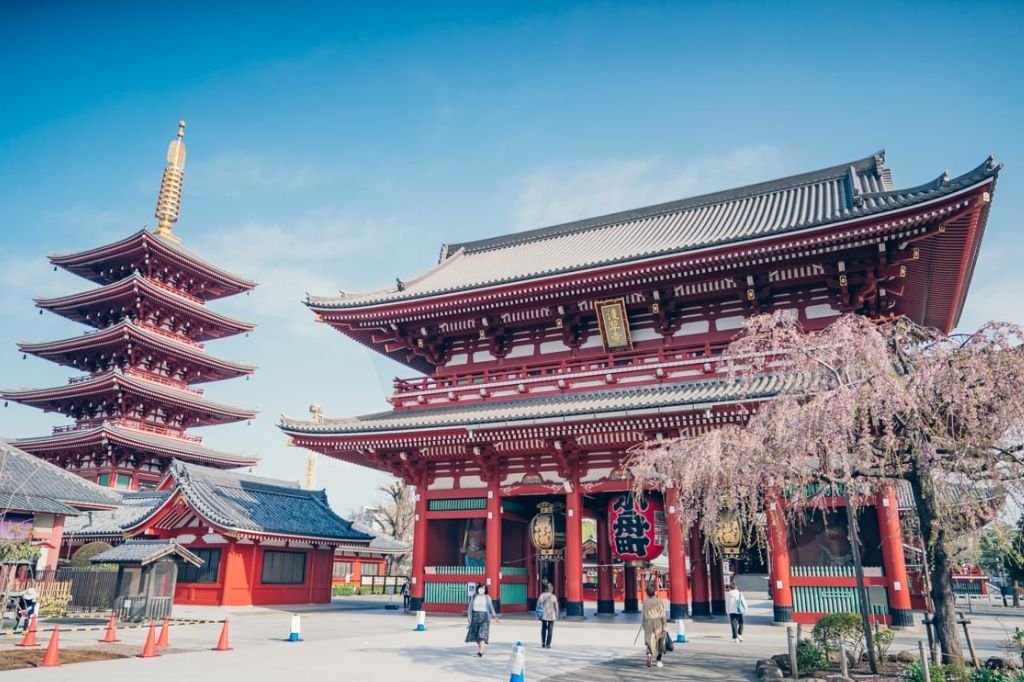
Within the 8 best places to take pictures in Tokyo, the Senso-ji Temple, along with its neighboring Asakusa District, emerges as a timeless gem, offering a journey back to historical eras. Positioned at the core of Tokyo, this ancient temple is not only the city’s most aged but also a cherished site for both sightseers and photography enthusiasts. As you navigate through the striking red lanterns and underneath the renowned Thunder Gate (Kaminarimon), you find yourself in a unique setting where past and present blend seamlessly.
The lively Nakamise street, adorned with vividly hued stalls, presents a vivid mosaic of hues and patterns for your camera lens. Further into the temple area, the Asakusa district reveals a slice of Tokyo’s historical character, marrying its cultural allure with a modern twist. The Senso-ji Temple and the Asakusa area are bountiful in opportunities to encapsulate the dynamic cultural spirit of Tokyo.
Best Spots for Photographs at Senso-ji Temple:
- Kaminarimon Gate: The iconic entrance to the temple, marked by a massive paper lantern, is perfect for framing shots that capture the fusion of culture and daily life.
- Five-Story Pagoda: Capture the stunning architecture of the pagoda, especially beautiful during sunset or when lit up at night.
- Nakamise Shopping Street: This bustling street leading to the temple is lined with traditional shops and offers a colorful backdrop for street photography.
Read More: The 6 Best Romantic Restaurants in Tokyo
2. Shibuya Crossing
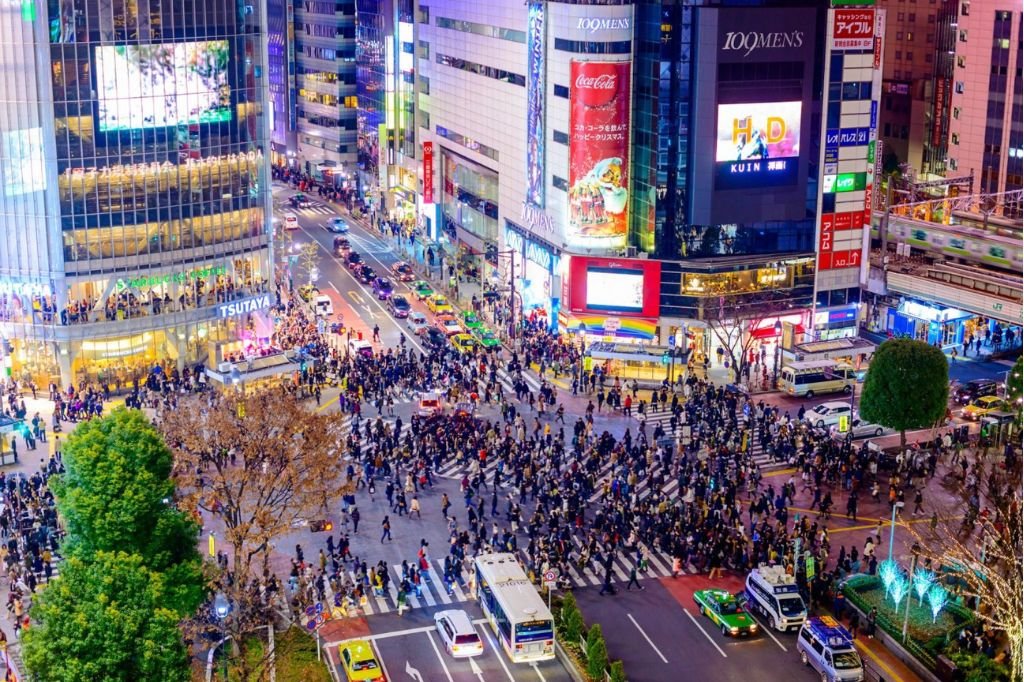
Shibuya Crossing, renowned as the busiest pedestrian crossing globally, is among the 8 best places to take pictures in Tokyo. Located in the bustling heart of Tokyo, it symbolizes the city’s lively spirit. This famed crossroad serves as a vivid representation of Tokyo’s city life, providing a dynamic and visually stimulating subject for photographers. Each time the traffic lights change, it becomes a stage for thousands of pedestrians, creating an enthralling display of continuous movement against a backdrop of bright neon lights. In this setting, the streets transform into a photographer’s canvas, capturing the vibrant pulse of Tokyo’s urban heartbeat.
Tips for Capturing Shibuya Crossing:
- Elevated Views: Find a spot in one of the nearby buildings for a bird’s-eye view of the crossing. This perspective allows you to capture the sheer scale of the crowd.
- Night Photography: As evening sets in, the crossing comes alive with neon signs and street lights, offering a vibrant setting for night photography.
- Motion Blur: Use a slower shutter speed to capture the blur of people moving, which adds a sense of motion and energy to your photos.
3. Tokyo Tower
One of Tokyo’s most iconic landmarks, Tokyo Tower, stands tall as a symbol of Japan’s post-war rebirth as a major economic power. Its design, inspired by the Eiffel Tower, offers a striking red and white structure that stands out in Tokyo’s skyline. For photographers, Tokyo Tower presents a unique blend of traditional Japanese culture and modern architectural beauty.
Suggestions for Day and Night Photography:
- Daytime Shots: Capture the tower against the backdrop of the city’s skyline during the day. The contrast of its bright color against the blue sky makes for a vivid image.
- Night Photography: As night falls, Tokyo Tower lights up, offering a spectacular view. Experiment with long exposures to capture the tower’s illumination and the city’s lights.
- From Afar: Find a spot at a distance, like Roppongi Hills, to get a panoramic view of the tower with the urban landscape.
4. Meiji Shrine
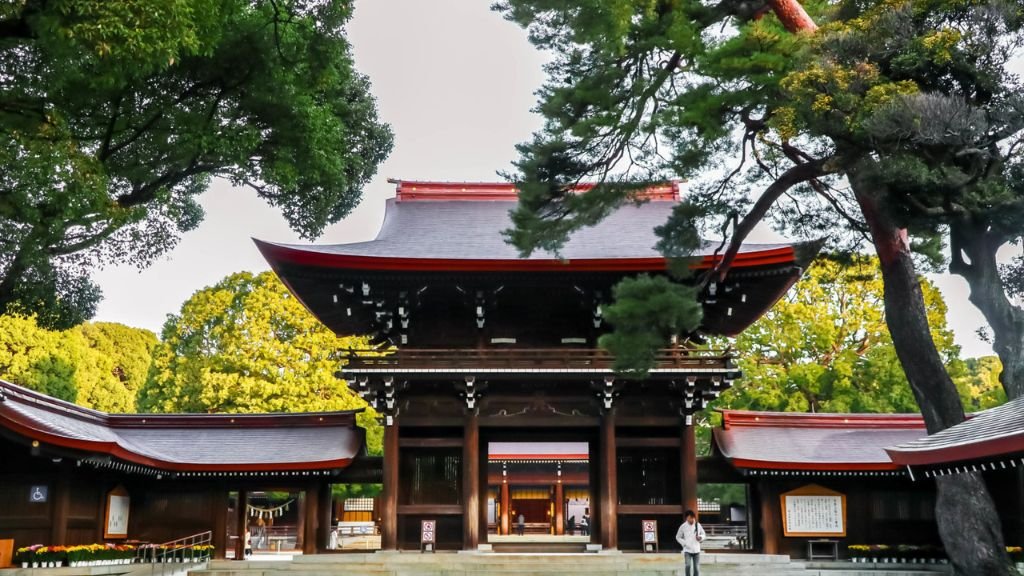
Amidst the hustle and bustle of Tokyo lies the serene Meiji Shrine, dedicated to the deified spirits of Emperor Meiji and his consort, Empress Shoken. The shrine’s lush forest setting offers a peaceful retreat from the city and a chance to capture the tranquility and natural beauty of a more traditional Japan. This shrine embodies the tranquil side of the 8 best places to take pictures in Tokyo.
Ideal Times for Capturing Serene Moments:
- Early Morning: Visit the shrine early in the morning to capture the soft morning light filtering through the trees, and to avoid the crowds.
- Late Afternoon: The golden hour before sunset provides a warm, soft light that enhances the natural beauty of the shrine and its surroundings.
- Festivals and Ceremonies: Keep an eye out for traditional festivals or Shinto ceremonies, which offer a rare glimpse into Japan’s cultural heritage.
Read Also: Best Luxury Hotels & Resorts in Miami
5. Arrive early at Eitai Bridge
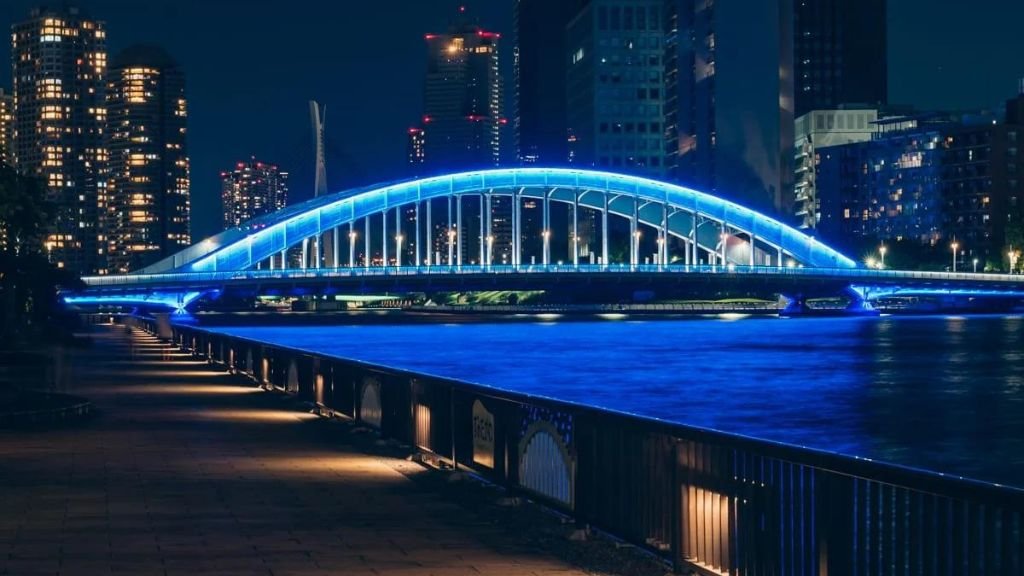
This location is often bustling with people, especially those interested in Tokyo photography. The main attraction here is capturing the movement of ships as they sail beneath you, gliding along the river. Directly ahead, a cluster of apartment towers acts as a focal point in your photographs, standing where the river splits. This spot is particularly suited for evening photography rather than daylight. The best approach is to arrive around sunset and continue taking photos into the night for about an hour.
Photographers typically wait for boats to pass under the bridge to capture the beautiful light trails they leave behind. Since boats move slower than cars, it’s essential to use a continuous shooting mode to effectively track their light trails. It’s recommended to get to the location 30 minutes before sunset to catch the best views. Using a 30-second exposure for each shot, you can aim to capture multiple boats in a sequence of around 100 photographs.
Tips for Capturing Arrive early at Eitai Bridge:
- Soft Lighting: Early morning light is usually softer and more even, which can beautifully highlight the bridge and its surroundings, creating a more tranquil and natural look in your photos.
- Fewer Crowds: By getting there before the majority of the city awakens, you can enjoy a quieter atmosphere, making it easier to capture the serene essence of the bridge without the distraction of heavy pedestrian or vehicle traffic.
- Reflective Moments: The calm waters in the early morning can provide stunning reflections of the bridge, adding depth and a sense of peace to your shots.
- Nature’s Awakening: Early mornings are also a great time to capture the interaction between the urban structure of the bridge and the awakening natural world around it, like the soft hues of the dawn sky or birds starting their day.
6. Shinjuku Gyoen National Garden
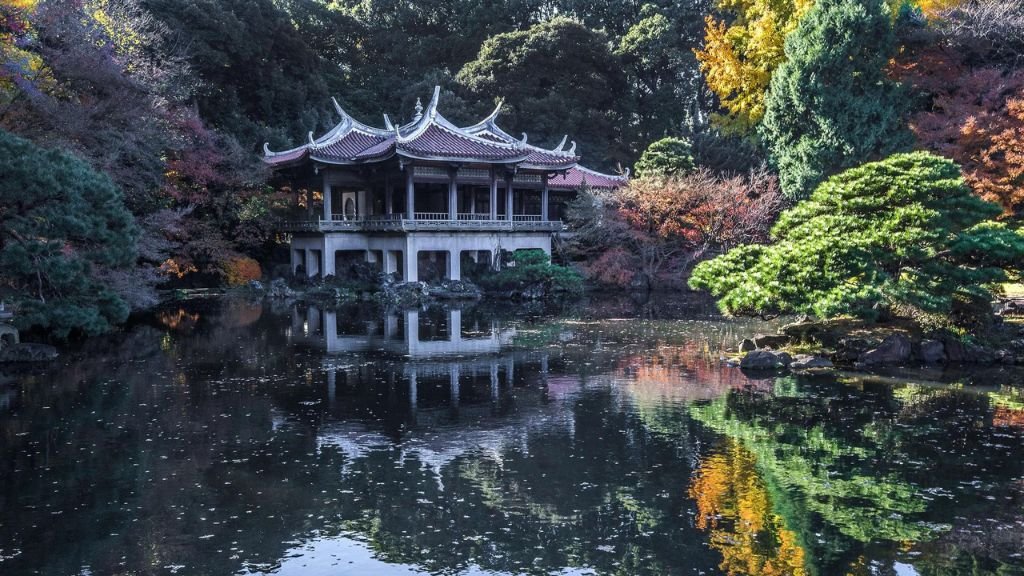
Located in the heart of Tokyo’s dynamic urban setting, Shinjuku Gyoen National Garden is a peaceful, beautifully maintained haven offering a break from the city’s fast pace. This verdant retreat is a haven for both nature lovers and photographers. It beautifully combines elements of a traditional Japanese garden, including tranquil ponds and peaceful teahouses, making it an ideal backdrop for capturing Tokyo’s natural splendor.
The garden’s appearance transforms with the seasons, from the cherry blossoms in spring to the richly colored leaves in autumn, providing a year-round serene atmosphere. Shinjuku Gyoen is a true photographic treasure, showcasing the ever-evolving natural landscape of Tokyo.
Tips for Nature and Landscape Photography:
- Seasonal Changes: Each season brings a different look to the park, from cherry blossoms in spring to colorful leaves in autumn.
- Greenhouse: Home to a variety of exotic plants and flowers, offering close-up photography opportunities.
- Early Morning Light: Visit early in the morning for soft lighting and fewer crowds, ideal for capturing the serene beauty of the gardens.
Also Read: Best All-Inclusive Resorts in Texas
7. Harajuku
Harajuku, the heart of Japan’s youth culture and fashion, is an explosion of color, trend, and creative expression. The streets of Harajuku are a photographer’s dream, lined with vibrant shops and cafes, and filled with people dressed in eclectic and avant-garde fashion styles.
Recommendations for Street Photography:
- Takeshita Street: This narrow street is bustling with unique fashion boutiques and trendy youths, perfect for capturing the essence of Harajuku culture.
- Side Streets: Venture into the side streets for more candid shots of local life and lesser-known fashion trends.
- Engage with Your Subjects: Don’t hesitate to interact with the people you photograph; many are happy to pose and share their style.
8. Chidorigafuchi
Chidorigafuchi, located close to Tokyo’s Imperial Palace, is one of the 8 best places to take pictures in Tokyo, particularly renowned for its breathtaking beauty during the cherry blossom season. This scenic spot becomes a focal point for photographers and nature lovers in spring when the “sakura” trees blossom, enveloping the area in a stunning pink hue. The cherry trees that line the moat create a magical and fleeting display of Japan’s celebrated Sakura season.
For those looking to capture the essence of Tokyo’s spring, Chidorigafuchi presents an ideal setting with its blend of delicate cherry blossoms and the historic ambiance of the stone walls surrounding it, making it an essential destination for springtime photography in the city.
Reasons why Chidorigafuchi is a place for Photography:
- Cherry Blossom Haven: Situated near the Imperial Palace, Chidorigafuchi becomes a stunning cherry blossom haven in spring, with the moat lined by a breathtaking array of cherry trees.
- Iconic Scenery: The site offers the chance to take magnificent photos with cherry blossoms set against the historical stone walls of the Imperial Palace and its picturesque bridges, epitomizing the classic Tokyo spring.
- Nighttime Glow: An evening visit allows photographers to capture the enchanting sight of the cherry blossoms under illumination, ideal for creating magical night photos.
- Rowboat Vantage Point: Renting a rowboat provides an exclusive and tranquil perspective for photographing the cherry blossoms from the water.
- Festive Vibes: The area buzzes with a festive mood as locals and visitors engage in “hanami” (flower viewing) picnics, presenting ample opportunities to photograph spontaneous interactions and the vibrant spirit of the spring season.
Read More: All-inclusive Resorts United States
Conclusion
Taking photographs in Tokyo is an incredible adventure. The city offers a plethora of excellent photo opportunities. However, the 8 best places to take pictures in Tokyo have been highlighted previously. In this vibrant city, you’ll encounter beautifully arranged cuisine in various eateries, exceptionally fashionable crafts, and fascinating historical elements. Tokyo serves as a fantastic starting point for your journey. To ensure you capture the best of your memorable moments, it’s essential to carry the right travel photography equipment. Don’t forget to include a tripod and an ideal prime lens, especially for capturing the essence of Tokyo’s streets at night.
Frequently Asked Questions (FAQs)
How were the “8 Best Places to Take Pictures in Tokyo” selected?
The selection of these 8 places was based on a combination of factors, including their popularity among photographers, their iconic status, and their unique photographic opportunities. These locations offer diverse settings and subjects for photography in Tokyo.
What are the things to carry for photography?
Discover the 8 best places to take pictures in Tokyo. For these excursions, you can equip yourself with a DSLR or mirrorless camera, a lens that suits your photographic vision, a tripod for stability, a lens cleaning kit for maintenance, a reliable camera bag for carrying your gear, a memory card for ample storage, an extra battery to avoid running out of power, and a lens filter for protection.
Can I visit all 8 places in one day?
It’s possible to visit all of them in one day, but it might be rushed. To fully enjoy each location and capture the best photos, consider spreading your visits over multiple days. It will also allow you to explore the surrounding areas.
Are there any photography restrictions at these locations?
Most of these locations are open for photography, but it’s essential to be respectful of any posted rules or guidelines. Some places, like temples and shrines, may have restrictions on where you can take photos. Always follow the local rules and be mindful of other visitors.
What time of day is best for photography at these spots?
The ideal time varies depending on the location and your photographic goals. Sunrise and early morning are generally great for soft lighting and fewer crowds. Sunset and the blue hour are excellent for capturing cityscapes. Nighttime can create stunning images in well-lit areas.
Can I hire a local guide for photography tours at these locations?
Yes, there are photography tour guides available in Tokyo who can provide insights, tips, and assistance in capturing the best photos at these spots. Hiring a guide can enhance your photography experience.


